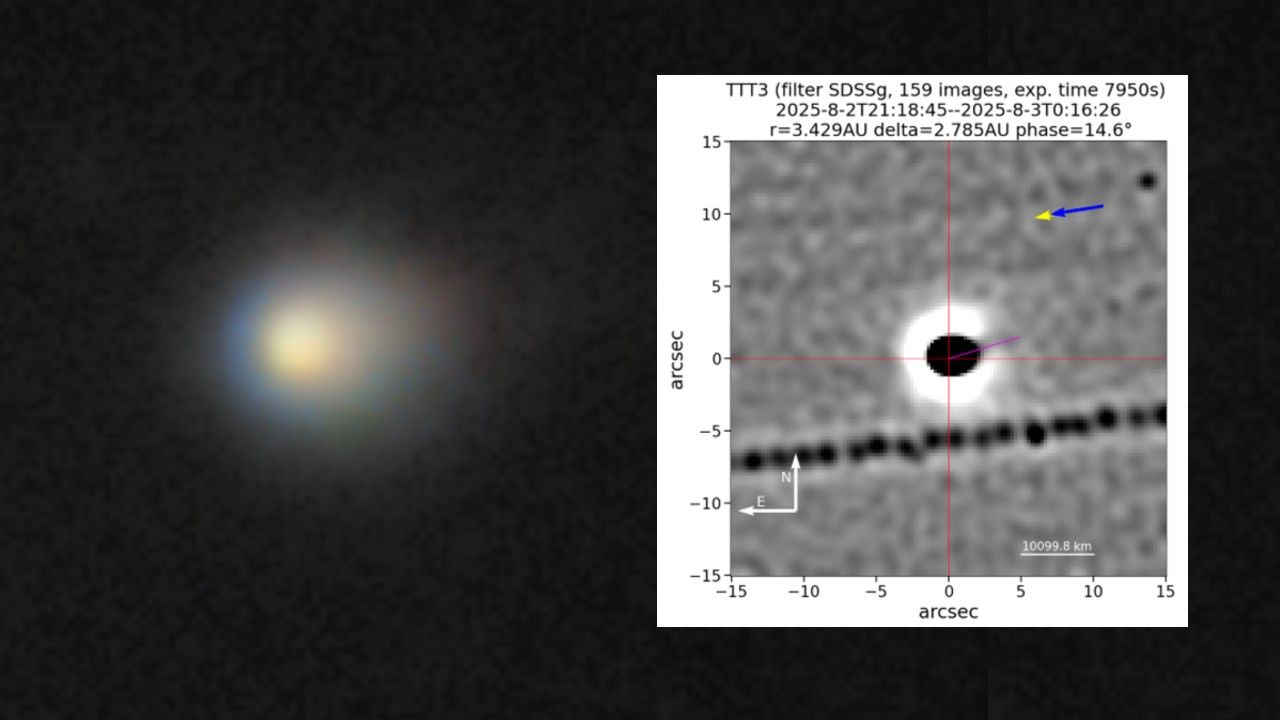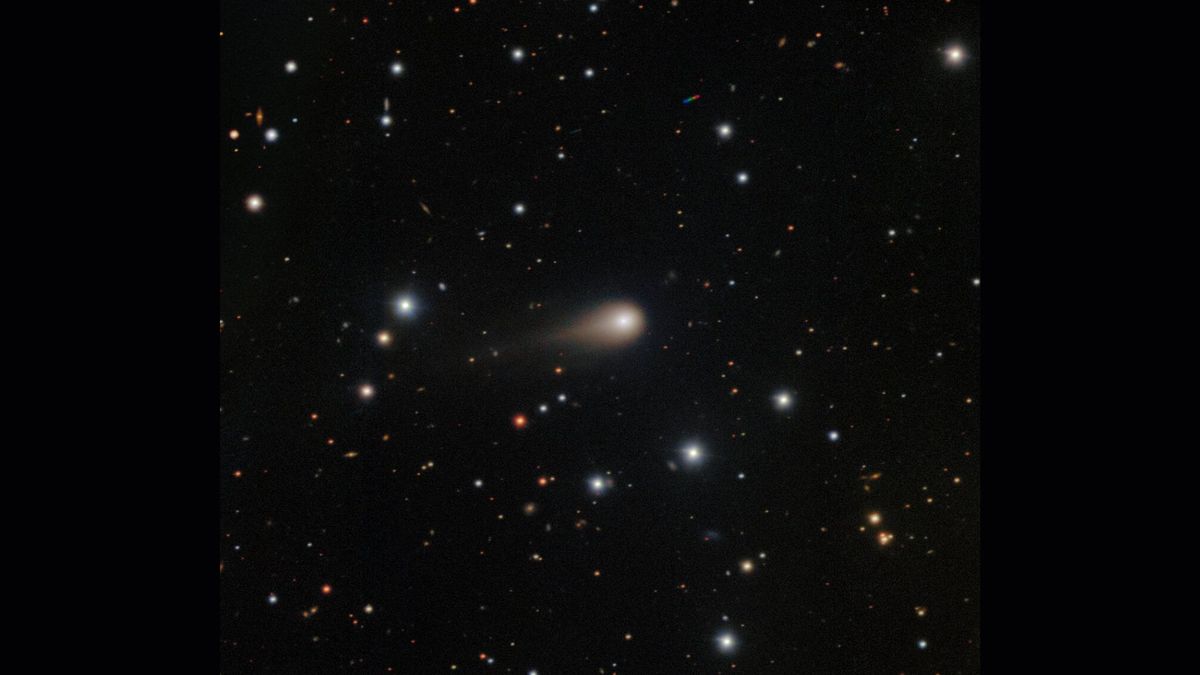☄️ 3I/ATLAS: interstellar visitor ejects giant jet toward the Sun
Follow us on Google News (click on ☆)
New images captured by the two-meter twin telescope at the Teide Observatory reveal a spectacular jet extending nearly 10,000 kilometers (about 6,200 miles) from the comet's surface. This phenomenon, typical of comets as they approach the Sun, occurs when regions exposed to the star rapidly heat up, causing subsurface ices to sublimate. The released gases break through the cometary crust and violently escape into space, forming these impressive cosmic geysers.

Composite image of comet 3I/ATLAS showing its central nucleus and a jet of material extending toward the Sun
Credit: International Gemini Observatory/NOIRLab/NSF/AURA/K. Meech (IfA/U. Hawaii) / Image Processing: Jen Miller & Mahdi Zamani (NSF NOIRLab) Inset: Teide Observatory, M. Serra-Ricart, Light Bridges
This particular jet, first observed on August 2, results from the combination of 159 exposures of 50 seconds each. According to analyses, it is primarily composed of carbon dioxide and dust particles, similar to those previously detected by the James Webb Space Telescope. The chemical composition of these ejecta provides valuable clues about the conditions that prevailed in the comet's original stellar system, long before its arrival in our cosmic neighborhood.
3I/ATLAS's trajectory is currently taking it toward its closest point to the Sun, which it will reach on October 30. On that date, it will be located approximately 1.8 astronomical units from Earth, nearly twice the Earth-Sun distance. This relative proximity will allow amateur astronomers equipped with small telescopes to directly observe this interstellar visitor before it permanently disappears into the depths of the outer Solar System.
This comet's behavior strangely resembles that of native comets in our Solar System, such as C/2020 F3 NEOWISE which was visible to the naked eye in 2020. This similarity suggests that the physical processes governing cometary activity might be universal, applying equally regardless of the comets' original stellar system. The discovery of these interstellar objects thus opens new perspectives for understanding the formation and evolution of planetary systems in our galaxy.

Observation of comet 3I/ATLAS by the Gemini South telescope showing its structure and activity
Credit: International Gemini Observatory/NOIRLab/NSF/AURA/Shadow the Scientist. Image Processing: J. Miller & M. Rodriguez (International Gemini Observatory/NSF NOIRLab)/T.A. Rector (University of Alaska Anchorage/NSF NOIRLab)/M. Zamani (NSF NOIRLab)
The phenomenon of cometary jets
Cometary jets represent one of the most dynamic spectacles in the Solar System. They form when solar heat directly transforms ice into gas, a process called sublimation. This transformation creates pressure beneath the comet's surface that eventually finds weak points to violently escape.
The direction of these jets is always oriented toward the Sun because it's the illuminated face that receives the most energy. The composition of ejected materials varies with distance from the Sun: at great distances, primarily volatile gases like carbon monoxide escape, while closer to the star, more refractory compounds join the spectacle.
Studying these jets allows researchers to examine cometary nuclei surfaces by identifying active areas. Astronomers can thus determine the comet's rotation period and estimate the proportion of different ices in its composition. Each jet tells part of the comet's story and the conditions of its formation.
Jet morphology evolves with the nucleus's rotation, creating complex structures that sometimes extend for tens of thousands of kilometers. Some materials remain in the comet's coma while others, pushed by the solar wind, form the characteristic tail that can extend for millions of kilometers.
Interstellar visitors
Interstellar objects like 3I/ATLAS are messengers from other stellar systems. Their hyperbolic trajectory betrays their origin outside the Solar System, distinguishing them from comets and asteroids native to our planetary system. Their recent discovery opens a new window on the diversity of worlds in our galaxy.
These cosmic travelers form in distant planetary systems before being ejected by gravitational interactions with giant planets. Their journey through interstellar space can last millions, or even billions, of years before they briefly traverse our Solar System. Each visitor brings with it unique information about the chemistry and physics of its original system.
Studying their composition reveals sometimes surprising differences with objects from our system. Some display unusual isotopic ratios or distinct chemical abundances, testifying to different formation conditions. These variations help scientists understand how many types of planetary systems can exist in the Milky Way.
Detecting these objects remains a technical challenge as their passage is usually brief and their brightness weak. Future large observatories like the Vera Rubin Observatory should enable the discovery of many more, transforming our understanding of the frequency and nature of these interstellar travelers.